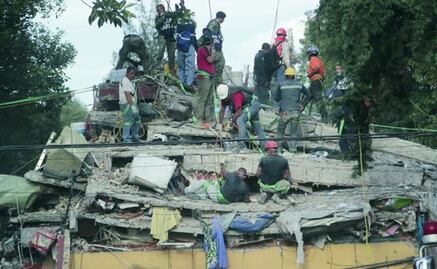Más Información

Entra en vigor incremento del 13% al salario mínimo general; Morena celebra año “de justicia social”

Ryan Wedding, el "Pablo Escobar moderno" ligado al Cártel de Sinaloa; el exatleta por el que ofrecen 15 millones de dólares

IMSS Bienestar da de alta a dos lesionados por descarrilamiento del Tren Interoceánico; cinco pacientes siguen hospitalizados

UNAM reconoce que 2025 estuvo “caracterizado por momentos complejos y difíciles”; va por fortalecer bienestar emocional
On September 19 last year , Mexico mourned the victims of an earthquake that defied all probability. 32 years after one of the most devastating earthquakes in the country’s history and only a couple of hours after a drill that was meant to commemorate said tragedy, a new earthquake struck Mexico City leaving a toll of 38 collapsed buildings . Other constructions were added to the equation, suffering irreparable damage.
Are there lessons to be learned after the earthquakes? What have we achieved in disaster prevention and what precautions have we failed to observe? Doctor Mario Rodríguez, from the Structures and Materials Department at the Engineering Institute of Mexico’s National Autonomous University (UNAM) assures that there are several factors to consider in the process. From the moment an architectural project is created until the moment the keys are delivered to the user, structures are maintained as basic skeletons; if for whatever reason these structures are not built effectively, they are likely to become vulnerable during earthquakes.
Unfortunately, the specialist added, in Mexico there are certain obsolete architectural concepts that still govern most construction companies’ idea of a good structure performance, meaning that on many occasions, architects and builders prioritize space and lighting over structural security . This is added to low construction standards in Mexico City’s legislation .
“There are no general regulations in the country, which is baffling considering that even the world’s poorest countries have construction standards of this kind . There should be a standard regulation in Mexico that recognizes material peculiarity and practices in every region,” he stated. Most of the existing construction standards focus on Mexico City; however, they are often way less demanding than in other countries presenting seismic activity such as Japan or even Chile . While it is true that the southernmost Latin American country does not have an unstable soil like Mexico, it has drawn better lessons out of its seismic activity.
Darío Rivera, chairman of Mexico’s Seismic Engineering Society
, commented that one of the most important lessons to retain from the earthquake of September 19 is that there are different types of earthquakes that exert all sorts of impact on buildings. “Last year’s event was an intraplate earthquake , with an epicenter that was much closer to Mexico City than the one from 1985 . Due to the nature of the earthquake, mid-size buildings were the most affected. This means that we need to prepare for earthquakes affecting low and medium height buildings,” the expert stated.
dm
Noticias según tus intereses
[Publicidad]
[Publicidad]











